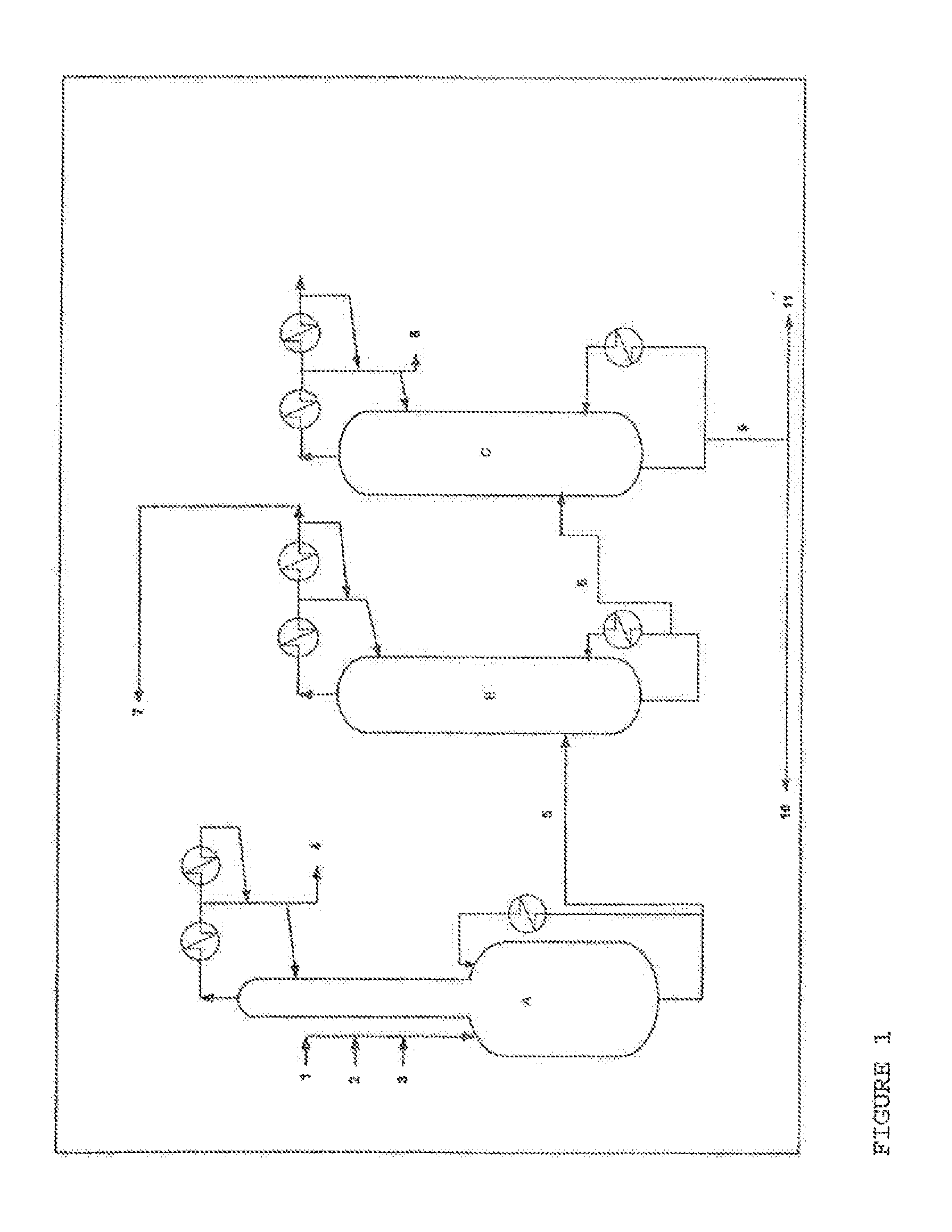Method for the production of 2-octyl acrylate by means of transesterification
a technology of acrylate and acrylate, which is applied in the preparation of ester-hydroxy reactions, chemical apparatus and processes, and organic chemistry, etc., can solve the problems of complex process, high energy consumption, and relatively simple process simultaneously
- Summary
- Abstract
- Description
- Claims
- Application Information
AI Technical Summary
Benefits of technology
Problems solved by technology
Method used
Image
Examples
example 1 (
According to the Invention)
[0057]A mixture comprising the ethyl acrylate and 2-octanol reactants, ethyl titanate as a 90% solution in 2-octanol as catalyst with PTZ as inhibitor, in the proportions by weight 53.8 / 45.6 / 0.6, is charged to a perfectly stirred reactor A heated by an external exchanger and surmounted by a packed distillation column having 12 theoretical plates.
The reactor is heated, while bubbling with air, and, as soon as the temperature reaches 115° C. under 500 mmHg (0.67×105 Pa), EA (3) stabilized with 2500 ppm of PTZ, 2-octanol (1) and a mixture (2) of ethyl titanate in solution in 2-octanol (90% mixture), in proportions by weight 53.8 / 45.6 / 0.6, are continuously introduced.
At the column top, the EA / ethanol azeotrope (4), with a composition by weight of 35 / 55, is continuously withdrawn. This mixture (4) is recycled directly to the plant for manufacturing EA.
The crude reaction product (5) comprises the 2 OCTA formed, unreacted EA, unreacted 2-octanol and a mixture com...
PUM
| Property | Measurement | Unit |
|---|---|---|
| molar ratio | aaaaa | aaaaa |
| temperature | aaaaa | aaaaa |
| atmospheric pressure | aaaaa | aaaaa |
Abstract
Description
Claims
Application Information
 Login to View More
Login to View More - R&D
- Intellectual Property
- Life Sciences
- Materials
- Tech Scout
- Unparalleled Data Quality
- Higher Quality Content
- 60% Fewer Hallucinations
Browse by: Latest US Patents, China's latest patents, Technical Efficacy Thesaurus, Application Domain, Technology Topic, Popular Technical Reports.
© 2025 PatSnap. All rights reserved.Legal|Privacy policy|Modern Slavery Act Transparency Statement|Sitemap|About US| Contact US: help@patsnap.com


